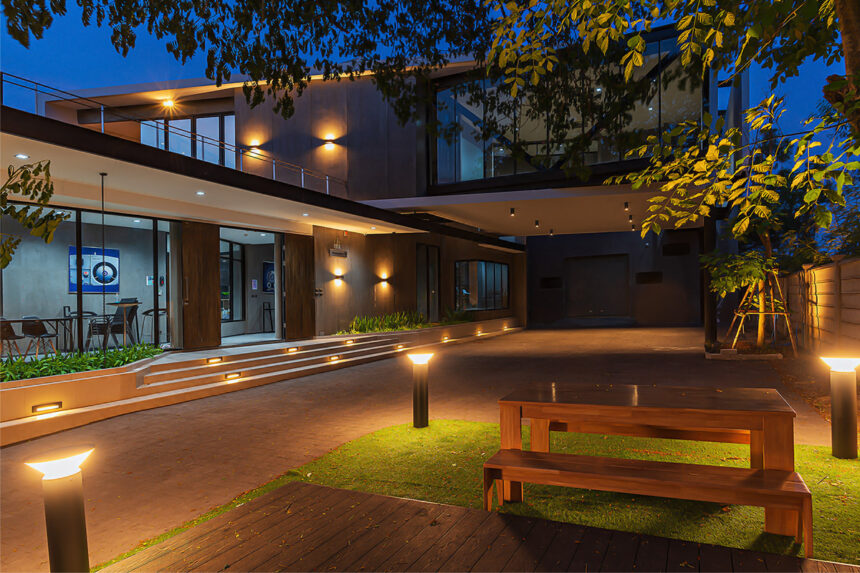Bright Ideas That Save Energy and Money
We’ve spent years testing and fitting outdoor lights, and we get why you care about a cozy yard that doesn’t hike your bills or hurt the planet. Imagine warm nights under gentle glows that cost almost nothing to run. That’s why we’re drawn to eco-friendly solar lights for gardens—they feel like magic and make sense for folks who want a greener home.
You might be wondering if they’re bright enough or if they last through cloudy days. Well, we’ve seen enough setups to know what works, what sometimes trips people up, and how a few tweaks make all the difference. In this post, we’ll share easy tips, real-life examples, and smart moves to help you pick, place, and care for outdoor lights that look good and do good. Let’s dive in.
Why Go Eco-Friendly with Your Outdoor Lighting?
You may ask: why swap to green lights? First, they cut power use. That means lower bills and less strain on the grid. Second, using solar or low-energy bulbs helps you sleep easier, knowing you’re not adding waste or high emissions. And last, it often means less upkeep—no tricky wiring or surprise repair costs. If you like simple setups and hate big monthly bills, this makes sense.
Types of Eco-Friendly Outdoor Lights
You’ve got options. Let’s look at a few:
Solar Pathway Lights
These pop up along walkways. They soak up the sun by day and glow at night. Most models need a few hours of direct sun. You’ll find styles from small stakes to lantern-like fixtures. They add charm and guide steps safely.
LED Flood and Spot Lights
LEDs use little energy and last long. If you pair LEDs with solar panels, you get bright beams without wiring. They work on highlighting trees or walls. Just check that the panels face enough sun and stay free of shade.
String and Accent Lights
String lights on solar can bathe a patio in soft light. Some designs store the day’s sun for a few evenings. They create a cozy vibe. You might drape them around pergolas or fences.
Motion-Sensor Solar Lights
They stay off until movement triggers them. This adds security while saving power. You can mount them on doors or a garage. They wake up only when needed.
How to Choose the Right Fixtures
Picking can feel tricky, but think through these points:
- Sunlight Access: Watch your yard’s sun patterns. If a spot is shady most days, a small solar lamp might underperform. You may need battery-backed options or supplement with low-voltage wiring.
- Brightness Needs: Do you want a soft glow or intense light? Check lumens: lower for mood lighting, higher for tasks. Remember, brighter often means larger panels or batteries.
- Style Fit: Your taste matters. Modern, rustic, or classic? Many eco lights come in varied looks. Think about materials, too—plastic may fade; metal may last longer.
- Weather Resistance: Outdoor gear must stand rain, heat, or cold. Look for IP ratings or user reviews, noting how they fare in your climate.
- Maintenance Ease: Some lights need occasional cleaning of panels or battery swaps. If you’d rather set and forget, find higher-end models known for low upkeep.
Placement Tips for Best Performance
Where you put the lights affects both look and function. Here’s how to plan it:
- Map Sun Exposure: Spend a day noting spots that get at least 4–6 hours of sun. Sketch a simple map or just mark locations.
- Avoid Shade Obstacles: Branches or structures may cast shade. Trim limbs or relocate fixtures as needed. Even a small shadow can cut panel output.
- Mix Heights and Layers: Try low pathway lights with taller post lights or string lights overhead. This layering creates depth and interest.
- Highlight Focal Points: Use spot or flood options to draw eyes to a favourite tree, statue, or seating area.
- Safety Considerations: Place lights where steps or uneven ground could cause trips. Solar stake lights work well along edges to guide footsteps.
Installation and Setup
Setting up eco-friendly lights is often simple, but a few steps ensure good results:
- Read Quick Guides: Even simple solar lights come with tips. Skipping instructions can mean the panel faces the wrong way.
- Test Before Final Fixing: Position panels where they’ll live, check that they charge, and light up after dusk. If they barely glow, try another spot.
- Secure Fixtures: For stake lights, push stakes firmly into the soil. For wall or post mounts, use proper anchors to handle wind.
- Angle Panels Correctly: Tilt panels to match your latitude for best sun capture. If adjustable, change seasonally if needed.
- Linking Options: Some solar lights can link to battery packs or share panels. If you need brighter or longer run times, consider combined setups.
Maintenance Advice
A little care goes a long way:
- Clean Panels Regularly: Dust or debris on panels cuts power. Wipe them a few times a season, more if your area’s dusty.
- Check Batteries: After a year or two, rechargeable cells may lose capacity. Swapping them restores brightness.
- Watch for Damage: Inspect for cracks or water ingress. Replace seals or fixtures if leaks appear.
- Seasonal Tweaks: In winter, shorter days mean less charge. You may move panels to sunnier spots or accept dimmer light. In summer, shade from new foliage could reduce output; trim if needed.
Real-Life Scenarios
You might picture a backyard that felt dull at night. After adding a few stake lights, a string around a pergola, and a motion sensor by the door, evenings feel inviting and safer. Or maybe a front yard with sparse sun spots—choosing a small solar panel with a cable to a hidden battery allowed brighter path lights. These tweaks show how knowing your space leads to wins.
Conclusion
We’ve walked through why and how to pick eco-friendly outdoor lights, from sun checks to style choices. We believe every homeowner can enjoy a lit-up yard without sky-high bills or waste.
Our experience shows small steps—like panel cleaning or clever placement—make lights shine longer and brighter. If you want more hands-on guidance, we’re here to share what we’ve learned or answer questions. Let’s work together to brighten nights the green way and keep that outdoor space both warm and wise.
Related PR News:
Indoor vs Outdoor Climbing: Exploring the Difference














